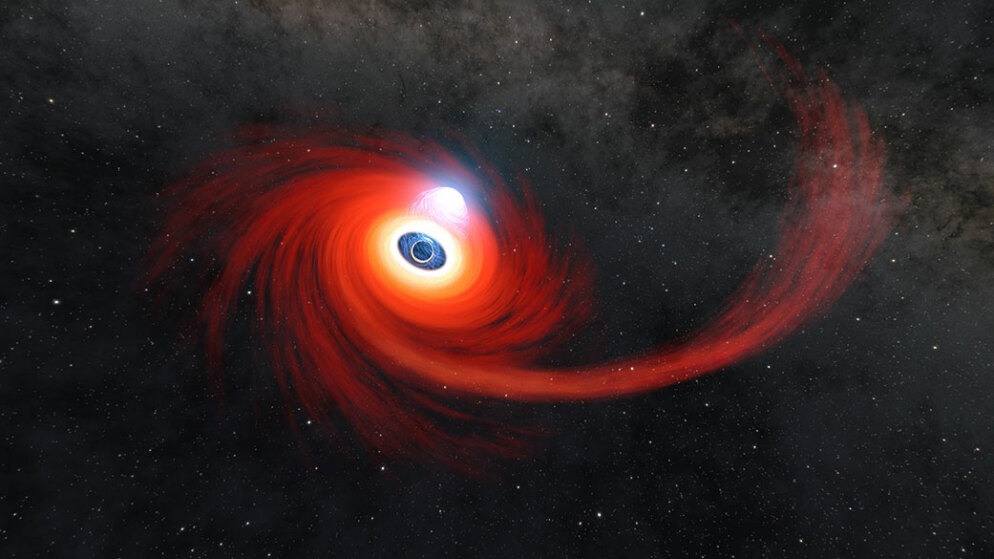Astronomers recently noticed how, from the far corners of the visible Universe, a supermassive black hole suddenly shone after a violent event. The bright light that flared up 10 billion years ago indicated that this hungry space monster suddenly began to absorb a huge amount of material. According to scientists, this is one of the most dramatic examples of such events that we have ever seen. The flare was named J221951-484240, or abbreviated J221951.

The University of Birmingham team presented their discovery at the annual UK National Astronomical Conference, and it is now available on the arXiv preprint server.
“Our understanding of the different things that supermassive black holes can do has greatly expanded in recent years, with discoveries of stars being torn apart and accreting black holes with hugely variable luminosities. J221951 is one of the most extreme examples yet of a black hole taking us by surprise,” says astrophysicist Matt Nicholl.
Calm and energetic black holes
There is a giant black hole in the heart of every galaxy, but they are not always active. Some, like Sagittarius A* of the Milky Way, are relatively calm, because there is not enough material around them for constant recharge. But the activity of supermassive black holes varies on a cosmic scale: they suddenly flare up when material becomes available, and then gradually fade out.
J221951 was discovered when astronomers were looking for another type of transient flare — the glow of neutron stars merging during a kilonova event. However, despite the correct color, the signal from J221951 was of the wrong duration. Kilonovae fade after a few days; J221951 lasted much longer.
The researchers had a closer look at the signal and found that the distance the light traveled was significantly greater than they initially thought: 10 billion years, as opposed to 500 million. The flare was traced to the center of the galaxy, at a specific location in space and time. This also meant that it was extremely bright — it did not arise as a result of a single explosion, but was a constant glow created by heated material orbiting a supermassive black hole.
The suddenness of the flare, as well as its brightness, indicated that the black hole began to absorb a huge amount of material, moving from a calm state to burning activity.
Terrible scenario
There are two possible explanations for this. First, the black hole began to absorb matter swirling in the accretion disk around it, which finally got close enough for the black hole to absorb it, turning into the so-called active galactic core. The second explanation is more rigid and involves the destruction and accretion of a star, which came too close to the black hole, as a result of an event known as a tidal disruption.
This discovery is one of the most dramatic examples of the activity of supermassive black holes and gives new insights into their nature and impact on the Universe around them. With the help of new observations and further research, science will be able to expand its knowledge about these mysterious space objects and their influence on the formation and development of galaxies in the Universe.
Earlier we reported on how the curvature of light helped to find the largest black hole.
Follow us on Twitter to get the most interesting space news in time
https://twitter.com/ust_magazine
